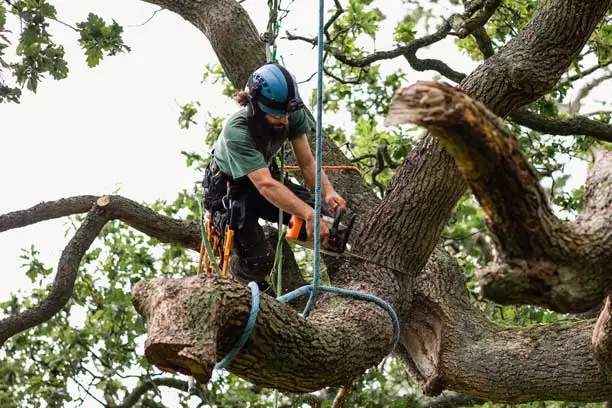Does Homeowners Insurance Cover Tree Removal?


Maybe you have a tall tree close to your home, and you’re worried about it falling. Or maybe a tree has already fallen, and you need to clear it. What kind of tree and debris removal is covered under a homeowners insurance policy?
Start here to learn whether homeowners insurance may help.
If a tree, branch or shrub damages your home, garage or other property that’s covered by your homeowners insurance, you may be covered for the damage to the building and to any contents that get damaged. It doesn’t matter if it’s wind, hail or lightning that takes the tree down. Your homeowners insurance may also cover the cost of removing the tree.
Be sure to take care of your trees and shrubs. Your insurance company may not pay if the tree that caused damage was poorly maintained, rotten or dead.
If your neighbor’s tree fell and caused damage, your insurance company may try to get their insurance company to pay. In that case, you might not have to pay your deductible.
Sometimes, it’s not clear where the tree or branch came from. For example, a lot of debris could be flying around in a hurricane or severe thunderstorm. In situations like those, your insurance company may not be able to find out who owned the tree.
If a tree falls on your property and doesn’t damage a structure, there’s usually not coverage under your homeowners insurance for debris removal. You’ll be responsible for removing the tree yourself or hiring someone to remove it for you.
It’s possible that your insurance may cover tree removal if the tree is blocking a driveway or ramp that someone with a physical disability needs to use to get in and out of your home.
Will your insurance cover preventative tree removal? Generally, no. Maintaining your landscaping and removing trees that are unhealthy are considered general home maintenance tasks that are your responsibility.
It’s a good idea to remove any trees that are dead, unhealthy or at risk of falling, and to remove branches that are overgrown. If you have trees that are close to power lines, you may want to hire a professional to cut them back.
You may also want to have an arborist or landscape architect evaluate your tree roots, so you know if they might interfere with your foundation or any underground wiring or pipes.
A tree that’s big enough to cause structural damage if it falls could be worth $1,000 or more. Is that covered by homeowners insurance? Policies cover damage depending on the cause. You may have coverage if vandalism, lighting, fire or a vehicle you don’t own causes damage to your property.
Tree insurance itself is not an actual type of policy. In terms of insurance coverage for damaged trees, most homeowners insurance policies limit the amount they will cover for any one tree or shrub as well as the total amount they will pay if multiple trees or shrubs are damaged or destroyed by a covered loss.
When you purchased your home insurance, did you consider the impact the trees and other landscaping on your property can have? Reach out to Farm Bureau to discuss your coverage needs.